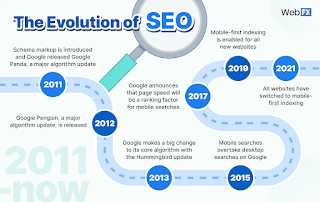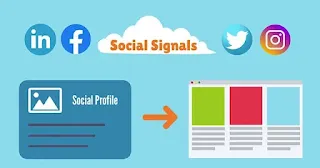History and Evolution of SEO
History and Evolution of SEO
The Google was invented by two students as a part of their university project in 1998. First, it was used as a subdomain under their university website in which the search results will be sent to the submitted email id. This process took more than 24 hours time. By 2000, internet was widely used all around the globe. On September 11, 2001 following the Al- Qaeda attack at the World Trade Center in America, people were searching Google for the news regarding the same but the results were disappointing. This made Google restless, since it could not provide the details about the world's largest building of that time. The engineers in the Google pointed out that the problem was that, not all the available web pages were crawlable to Google.
Now what is crawling? The search engine process through 3 steps. Crawling is the process by which a program called bot, (also called robot or spider) scan a new or updated page. The snapshot of that page is saved into the database according to their categories. This saving process is called Caching. The search results are retrieved by the process of indexing.
Now, in order to crawl every web page in the internet, the web masters who controls the web pages, must be given guidelines on optimization practice. This rise a concern among the engineers in Google since it belongs to their secret files. But at last with no other solutions left, they published 32 page starter guide document called “SEO Starter Guide”. Thus Search Engine Optimization started.
EVOLUTION OF SEO
The loophole in this case was that, the website owners started to sell the links to the webmasters who were looking for the same. Then google put forward the quality link specific approach, where pages were ranked out of 10. The ranks referred to the trust value of that web page. Here 200 other factors were also considered along with the links. Then web page owners with high page ranks started to sell the links to the web masters.
Hence google introduced a new tactics ‘Passing the Juice’. If the webmasters with good page ranking gives link to other web pages, their ranking will be reduced. Link value is referred as the value or equity passed from one page to another page. Google also put forward ‘no follow‘ mechanism, where equity passing is stopped.
<a href="http://link-path.com" rel="nofollow">anchored text</a>
Why was Google hesitating to change its algorithms? During the period of 2003 to 2008, Google had gained more popularity and growth and entered the field of advertisement. Google AdWords, later changed to Google Ads or Pay Per Click (PPC) is Google advertising service for business purpose where advertisements are displayed in google. AdSense is a program run by google through which website owners could display the business advertisement in their websites. The change in algorithm will results in the change in the keywords which will affect the viewers website visibility which leads to the decrease in Google’s revenue.
Google Ads and Google AdSense
Why Google feared to change its algorithm? Google became very popular during the period of 2000 to 2008. On October 23, 2000, Google started an advertisement program named Google Adwords, now known as Google Ads or Pay Per Click (PPC). It allows businesses to advertise their ads on Google’s search results page. Businesses will pay Google to display their ad at the top position based on keywords. On June 18, 2003, an affiliated program called Google AdSense was introduced. A person with a website or blog can apply and get approval from Google. Then those website owners can display ads in their website and earn according to the number of clicks for that particular ad. If Google changes its algorithm, it will affect their income because algorithm change leads to changes in keyword which in turn decreases the viewers visibility to websites, thereby decreases the revenue generated from ads.
Some of the major updates in 2008 include Personalized search results and Auto suggestion. Google started appearing as a personal assistant during this time. In 2009, rankings were based on interaction and time people spend on a website. Less interaction and less time spend on a website leads to increased bounce rate. When bounce rate decreases trust value increases. Revisiting and regular visiting will increase trust value. Pogo sticking is a situation when a user goes back and forth from search results in an attempt to find better results. It will be considered as a sign that the search results were not relevant or useful to the user. This can lead to a lower CTR (Click Through Rate) and a lower ranking in search results.
Importance of Social Signals
During 2010, Social media platforms gained popularity and contents appeared there reflected quality and value to some extent. The highest ranking pages in Google search results have a lot of shares which in turn lead to more traffic and also make your content more likely to build backlinks. Social media signals means the activities such as likes, shares, comments, etc., can improve website ranking. Influential power also plays a role in ranking.






